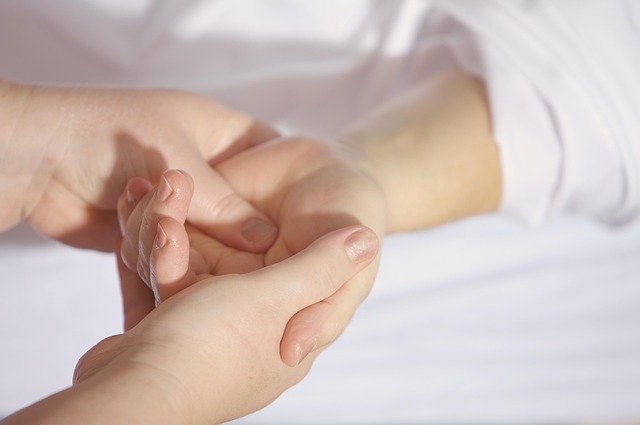Telehealth models for remote monitoring and multidisciplinary care
Telehealth models enable multidisciplinary teams to provide coordinated care for people with neuromuscular conditions using remote monitoring, wearables, genetics-informed consultations, and virtual rehabilitation. These approaches can support mobility, nutrition, counseling, and transitions between pediatric and adult services while facilitating access to clinical trials and gene therapy pathways.

Telehealth platforms can bring together specialists, therapists, and patients to manage complex neuromuscular conditions with greater continuity and convenience. By combining remote monitoring with scheduled virtual visits, care teams can track biomarkers, review wearable data, coordinate genetic testing and counseling, and prioritize in-person assessments when interventions are needed. This model reduces travel burdens and helps maintain regular oversight across cardiology, pulmonology, rehabilitation and nutrition services.
Genetics, gene therapy, and genetic testing
Virtual genetics consultations make it easier to initiate and follow up on genetic testing and to interpret results with a genetic counselor. Telehealth allows clinicians to review family histories, discuss variants of uncertain significance, and plan cascade testing for relatives. For individuals evaluated for gene therapy, remote visits support pre-enrollment screening, informed consent discussions, and longitudinal outcome monitoring after treatment. Telemedicine also helps connect patients to registries and specialist centers that coordinate eligibility assessment for clinical trials involving novel genetic approaches.
Cardiology and pulmonology in remote care
Cardiology and pulmonology are central to safety monitoring in many neuromuscular disorders. Remote monitoring tools can transmit heart rhythm strips, oxygen saturation, respiratory rates and symptom diaries to specialists, permitting trend analysis between visits. Virtual visits enable medication adjustments, timely referrals for imaging or pulmonary function testing, and triage for in-person evaluations when objective measures or biomarker trends indicate deterioration. Integrating these specialties into routine telehealth workflows supports proactive management of cardiac and respiratory complications.
Rehabilitation, mobility, and assistive tech
Rehabilitation via telehealth focuses on functional goals, home exercise programs, and caregiver training to support mobility. Physical and occupational therapists use video assessments to observe transfers, gait, and range of motion, and to recommend assistive tech and orthotic options appropriate for home use. Remote sessions can reinforce safe techniques, monitor progress with standardized outcome measures, and coordinate with local services for hands-on therapy or equipment fitting. Tele-rehab helps maintain continuity of care and adapt mobility plans as needs evolve.
Wearables, biomarkers, and remote monitoring
Wearables collect objective data such as step counts, activity patterns, heart rate variability and sleep, supplementing clinical assessments with real-world measures. When combined with periodic biomarker testing—blood markers of muscle injury, respiratory function indices, or other laboratory measures—these data streams enhance the detection of subtle decline or treatment response. Care teams can review aggregated wearable and biomarker data during virtual visits to make evidence-based adjustments to interventions and to determine when in-person diagnostics are required.
Nutrition, counseling, and transition care
Nutrition assessment and counseling are integral to maintaining strength, weight stability and swallowing safety; registered dietitians provide virtual evaluations and meal planning tailored to metabolic needs and feeding risks. Mental health professionals and social workers offer counseling to patients and caregivers addressing adjustment, fatigue and caregiver burden. Structured transition care programs delivered by telehealth help adolescents prepare for adult services by aligning pediatric and adult providers, reviewing medical records, and identifying local services in your area that can provide ongoing hands-on support.
Telehealth integration with clinical trials and systems of care
Telehealth supports decentralized models of clinical trials by enabling remote screening, electronic consent, virtual safety checks and data collection from wearables. Trial teams can monitor biomarkers and patient-reported outcomes without frequent travel, broadening access for geographically dispersed participants. Clinically, integrated platforms that combine telehealth visits, wearable feeds and shared care plans help multidisciplinary teams coordinate referrals, manage assistive tech deliveries and escalate care when objective data indicate a need for in-person intervention.
This article is for informational purposes only and should not be considered medical advice. Please consult a qualified healthcare professional for personalized guidance and treatment.
Telehealth models that thoughtfully combine genetics services, wearable monitoring, specialty input from cardiology and pulmonology, and coordinated rehabilitation, nutrition and counseling can improve continuity of care for people with neuromuscular conditions. Successful implementation requires clear communication pathways, standardized remote outcome measures, attention to data privacy, and links to local services for hands-on needs and equipment fitting. Over time, these integrated approaches may support better monitoring, smoother transitions, and more efficient enrolment in relevant clinical trials.






